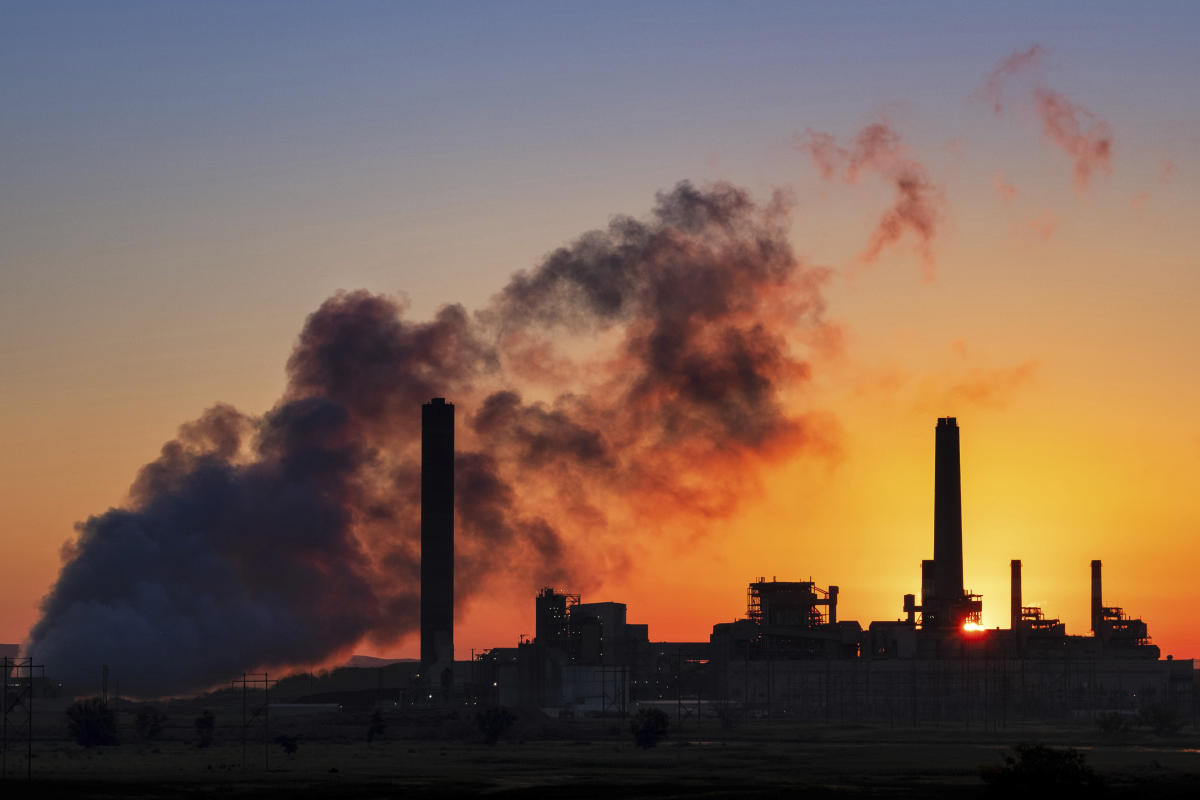BALTIMORE — At an East Baltimore elementary school Tuesday, Gov. Wes Moore signed what he called “one of the most comprehensive executive orders on climate of any governor in Maryland history.”
It wasn’t just any school. The Henderson-Hopkins School in Baltimore’s Middle East neighborhood is busy installing solar panels on its roof, which will provide energy to the grid and electricity discounts for low-income families in the community.
“I can’t think of a more appropriate place to be,” Moore told attendees in the school’s auditorium Tuesday. “They’re not waiting. They’re acting.”
With the executive order, Moore took several steps called for in the state’s climate plan, which was released in December by his Department of the Environment, and described a road map for cutting the state’s globe-warming emissions 60% by 2031, compared with 2006 levels, and reaching net-zero carbon emissions by 2045.
As part of the to-do list, Moore’s order requires his administration to develop a “zero-emission heating standard,” which eventually would phase out the installation of new fuel-burning furnaces and boilers in Maryland buildings, in favor of electric heat pumps and water heaters.
Per Moore’s order, every state agency will be required to submit climate plans to the governor by Nov. 1, explaining how they will take steps to slash emissions, and follow the state climate plan.
“These proposals must be submitted by every single state agency, because every single state agency is going to have a role to play,” Moore said.
As part of Moore’s marching orders Tuesday, the Maryland Energy Administration also must submit a framework for reaching the goal that 100% of the energy generated in Maryland is from renewable sources by 2035. The Maryland Department of Transportation will have to set targets for reducing the number of miles Marylanders travel by car each year, and slashing emissions from the transportation sector, which accounts for a sizable portion of the state’s greenhouse gas emissions.
The order also established a new Sub-Cabinet on Climate, which will report back to Moore about the implementation of the climate plan. Chaired by Maryland Secretary of the Environment Serena McIlwain, the cabinet includes many of Moore’s agency leaders.
“This executive order that the governor is signing today, it puts us on a clear path so that we can now begin to implement the climate pollution reduction plan,” McIlwain said Tuesday. “And this is a huge step in the right direction.”
Several climate advocacy groups said Tuesday that they were happy to see parts of the state climate plan set in motion.
In a statement, Jamie DeMarco, Maryland director of the Chesapeake Climate Action Network, called the heat pumps standard the most important part of Moore’s executive order.
“This regulation has a wonky-sounding name,” DeMarco wrote, “But it will almost single handedly decarbonize Maryland’s entire building sector while also reducing energy costs and cleaning the air.”
He cited a recent report from CCAN and other researchers that found that fossil fuel equipment in residential and commercial buildings in Maryland emits more than three times as much health-harming nitrogen oxides as all of the state’s power plants put together.
“Every gas furnace vents outside, and those vents are like little smoke stacks, and millions of little smoke stacks add up,” DeMarco wrote.
The new standard will not require anyone to remove a functioning furnace or boiler, according to the state climate plan. Existing fuel-burning heating systems can continue to be serviced and maintained. But when a building owner replaces a heating system, it must comply with the standard.
“Pollution from gas furnaces and water heaters increases the risk of premature death, asthma attacks and cancer,” said Emily Scarr, state director of Maryland PIRG. “We applaud Gov. Moore for today’s announcement and look forward to supporting strong regulations to clean up our air, lower heating bills, and protect the health of Maryland families.”
But some climate advocates gathered outside Tuesday’s event to highlight actions the state has failed to take. As McIlwain and other dignitaries flowed into Henderson-Hopkins, they held a banner with the phrase “Burning trash is not clean energy,” protesting the state’s inclusion of waste incineration in its renewable energy category.
Though the climate plan called for trash incineration to be nixed from the category, legislators in Annapolis did not pass such legislation, despite a multiyear campaign by advocates living near an incinerator in South Baltimore. Nearby signs also called for the closure of the coal terminal in South Baltimore’s Curtis Bay.
Before his announcement, Moore met with a small group of students on the Henderson-Hopkins climate action team in the school’s library. One by one, the students told him about environmental issues that concerned them.
Protecting the crabs in the Chesapeake Bay. Keeping the Inner Harbor clean. Stopping their neighbors from dropping cigarettes and other trash on city streets.
After they took a group picture, Moore signed one student’s T-shirt and another’s journal.
“I think it was really cool that he came out and talked to some youth,” said one seventh grader at Henderson-Hopkins. “Because most of the time, kids don’t really get a voice throughout their lives until they become adults. But then they’re too quiet to speak up about things like this.”
_______
Signup bonus from





